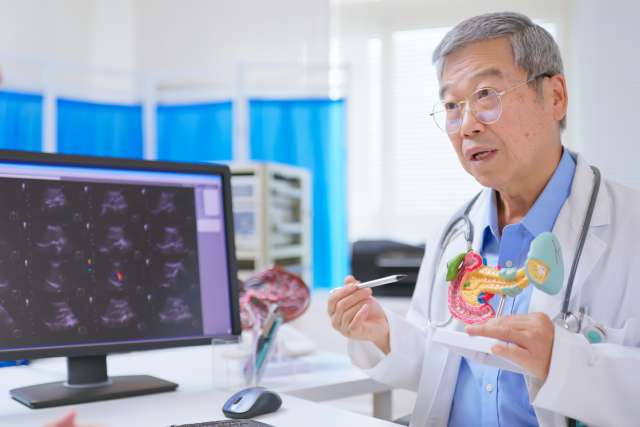It's a scenario straight out of "Grey's Anatomy"— a paramedic or doctor plops a mask over the face of a person struggling to breathe and begins dispensing pure oxygen.
Yet growing research suggests that inhaling straight oxygen can actually harm the brain. For the first time, a new UCLA brain-imaging study reveals why. Published in the May 22 edition of the journal Public Library of Science (PLoS) Medicine, the findings fly in the face of national guidelines for medical practice and recommend a new approach that adds carbon dioxide to the mix to preserve brain function in patients.
"For decades, the medical community has championed 100 percent oxygen as the gold standard for resuscitation. But no one has reported what happens inside our brains when we inhale pure oxygen," said Ronald Harper, distinguished professor of neurobiology at the David Geffen School of Medicine at UCLA. "What we discovered adds to a compelling body of evidence for modifying a widely practiced standard of care in the United States."
Harper's team used functional magnetic resonance imaging (fMRI) to capture detailed pictures of what occurs inside the human brain during two different breathing scenarios. The technique detects subtle increases in blood flow triggered by the activation of different parts of the brain, causing these regions to glow or light up on the color scan.
The researchers scanned the brains of 14 healthy children, ages 8 to 15, and monitored their breathing and heart rates as they inhaled 100 percent oxygen through a mouthpiece for two minutes. After waiting eight minutes for the youngsters' breathing to return to normal, the team added 5 percent carbon dioxide to the gas mixture and repeated the scan.
A comparison of the two scans revealed dramatic differences.
"When the children inhaled pure oxygen, their breathing quickened, resulting in the rapid exhalation of carbon dioxide from their bodies," said study co-author Paul Macey, a UCLA associate researcher in neurobiology. "The drop in carbon dioxide narrowed their blood vessels, preventing oxygen from reaching tissue in the brain and heart."
That's when something surprising happened on the MRI scan. Three brain structures suddenly lit up: the hippocampus, which helps control blood pressure; the cingulate cortex, which regulates pain perception and blood pressure; and the insula, which monitors physical and emotional stress.
All this activity awakened the hypothalamus, which regulates heart rate and hormonal outflow. Activation of the hypothalamus triggered a cascade of harmful reactions and released chemicals that can injure the brain and heart over time.
"Several brain areas responded to 100 percent oxygen by kicking the hypothalamus into overdrive," explained Harper. "The hypothalamus overreacted by dumping a massive flood of hormones and neurotransmitters into the bloodstream. These chemicals interfere with the heart's ability to pump blood and deliver oxygen — the opposite effect you want when you're trying to resuscitate someone."
When the children inhaled the carbon dioxide–oxygen mix, the hypothalamus' hyperactivity vanished from the MRI scan.
"Adding carbon dioxide to the oxygen relaxed the blood vessels, allowed oxygen to reach the heart and brain, calmed the hypothalamus and slowed the release of dangerous chemicals," Macey said.
"Pure oxygen kindles the match that fuels a forest fire of harm to the body," Harper said. "But a little whiff of carbon dioxide makes it all go away."
Based on their findings, the researchers strongly encourage health care providers to add carbon dioxide to oxygen dispensation, especially when resuscitating infants or administering oxygen for more than a few minutes. The new direction could hold particular implications for patients of stroke, heart attack, carbon monoxide poisoning and any long-term oxygen therapy.
"When in doubt about a case, the current medical approach is to increase oxygen levels and wait to see if the patient improves," explained Harper. "But no one has ever scanned patients' brains to examine how they respond to oxygen therapy."
Earlier data on high oxygen's harmful effects have already resulted in policy changes overseas. Instead of using straight oxygen, many European hospitals now resuscitate patients with room air, which contains a mixture of nitrogen, oxygen and carbon dioxide, or with a blend of oxygen and carbon dioxide.
Mary Woo, professor at the UCLA School of Nursing, was a co-author of the study, which was supported by the National Institute of Child Health and Development.
-UCLA-
ES232



